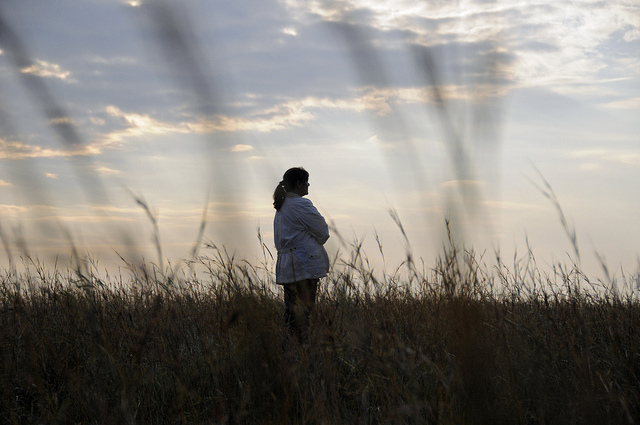
Everyone is standing in a circle. My heart is beats a thousand times a second. My breathing is shallow. Lights pop before my eyes and I begin to panic. With my heart in my throat, I freeze in time, caught between running away as fast as I can and joining the circle.
I do neither. I stand, frozen, sick to my stomach that it has happened again…
No, I’m not reminiscing on my former life as a cult member, nor am I hearkening back to the days of drunken seances during college parties. This agony that I’ve described is Social Anxiety Disorder (SAD), and it’s something I have to live with every day.
According to WebMD, 19.2 million Americans have Social Anxiety Disorder (SAD). It typically strikes during adolescence and early adulthood. Since SAD isn’t often thought of as a particularly “scary” disorder, its victims manage to avoid a lot of stigma. Unfortunately, on the flip-side, that means that we who suffer from SAD can be trivialized to a significant extent. So in an effort to educate those who do not have SAD and to alleviate some of the aloneness suffered by those who do, allow me to clear up some of the misunderstandings about Social Anxiety, cover some of the unique ways in which it affects twenty-somethings, and present ways it can be addressed and overcome.
Common Misunderstandings of SAD
Social Anxiety Disorder is, well, a disorder. It’s not healthy and natural like introversion. It’s not normal and typical like a distaste for public speaking. It is essentially a terror of looking stupid, making a mistake, or generally being judged by others. There is also an intense fear of not knowing what to say and awkward silences.
The fear of having a negative social experience can cause a sort of psychological paralysis which starts a vicious cycle. First you’re afraid of the experience so you avoid it, then because you avoid it you have less “practice;” and because you have less practice, you avoid it… see what I mean?
SAD also includes a dread of what might happen. I have chosen to opt out of events simply because I couldn’t bear to spend days or weeks worrying about them.
How SAD Affects Twenty-Something In Particular
SAD hits twenty-somethings particularly hard. It’s bad enough dealing with job interviews, constantly changing social circumstances, difficult co-workers, and awkward attempts to make new friends without being sick with fright at the thought of tackling these things.
Not to mention that we’re constantly being notified that these are “the best years of our lives,” and that we should stop being so anxious because “we’re only young and beautiful once.” How awful for someone struggling with a beast of a disorder to be told that, essentially, they’re “doing it wrong” because they should be feeling happy! If you struggle with SAD and someone says one of these things to you, please know that it doesn’t apply to you. They don’t understand what you’re going through and they would be horrified if they knew.
Living With SAD
I’ll be honest: I can’t close out this article by telling you that I cured my SAD, because I’m in the throes of it and it’s hell.
But wait! There’s good news: For one thing, I now know what I have. I spent years thinking there was something horribly wrong with me because I would throw up with anxiety at the thought of going to a party, but spend the week on a high if I got to meet a new person.
Others insisted I was “shy.” I am not shy. Introverted, yes. Shy, no. Socially anxious? Yes. There is no feeling in the world so relieving as figuring out that there is something wrong, you don’t have to just “accept” this pain, and it can be treated.
The second thing thing that brings me hope is my therapist. In my battle against SAD nothing has helped so much as therapy. Unfortunately I don’t have any supportive friends who understand where I am coming from, and that emotional aspect is a huge key to recovery, but I do have the psychological aspect.
Lastly, Social Anxiety Disorder is 100% curable. As I mentioned previously, it’s based on experience and conditioning rather than genetic makeup, so no, you don’t need pills to hold it at bay for the next 60 years.
Social Anxiety is based on interaction with others, so it doesn’t make me socially anxious per se to toss this article out into the internet. However, I admit that it is scary to reveal such a huge part of my fears and struggles. I can only hope that those of you who also struggle with SAD or who know someone who does will not feel so alone or hopeless anymore. The steps are small, but if you work on it then I promise that a month from now, six months, a year, you’ll be capable of things you never thought possible. You’ll be able to live.
